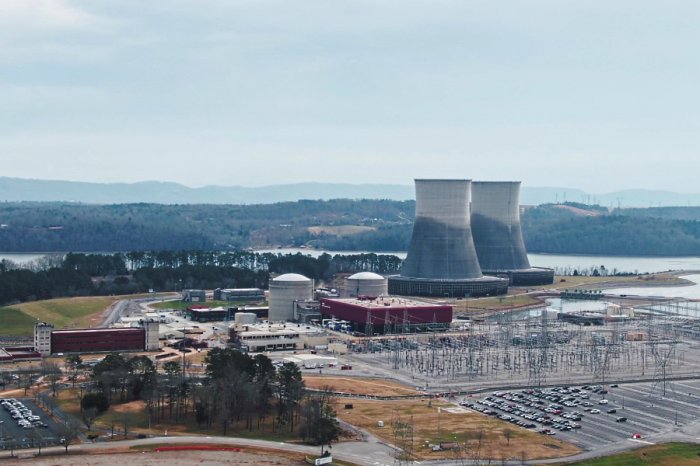After receiving the necessary documents and project presentation, our team will try to review your request as soon as possible, and leading experts will offer the best options for project funding.
A high-quality energy project financial model is essential to predict key performance indicators, attract long-term financing, and track project milestones.
GCAM Investment Group brings together a team of experienced professionals in the fields of project finance, financial modeling, lending, accounting, business law and engineering.
We are actively involved in the implementation of investment projects of our clients around the world, providing a full range of services for large businesses.
Our projects include thermal power plants, wind farms, solar power plants, geothermal power plants, electrical substations and other projects.
Contact our specialists for more information.
Creating a financial model for energy projects
Financial analysis based on basic financial ratios is one of the most important and widely used tools in the planning of capital-intensive investment projects such as the construction of power plants and substations.This analysis allows the project team to better understand the project's financial environment and variables, as well as identify areas that require special attention in financial modeling.
Table: The main tasks of financial modeling of the energy project.
| # | Tasks | Description |
| 1 | Increasing profitability | The high-quality financial model shows the key points and growth opportunities that the project team will focus on in the future. |
| 2 | Comprehensive project evaluation | The financial model allows the project team to plan all income and expenses. Based on these data, the effectiveness of the project is assessed, including investment attractiveness and profitability. |
| 3 | Risk minimization | Financial modeling shows all the weaknesses in the business and helps to reduce risks. For these purposes, the model uses scenario analysis and sensitivity analysis. |
| 4 | Obtaining large investment loans | Financial modeling helps sponsors obtain loans and / or attract investors. The financial model contains a lot of information that can be used in a business plan or memorandum. |
| 5 | Setting key performance indicators | Financial modeling will show energy sales, costs, profits and many other indicators, which will then be translated into specific goals. |
Standards and requirements for financial modeling are numerous and may vary significantly depending on the type of project, the scale of the investment, and even the legal framework of the host country.

The following are the general requirements applicable to the financial model of the energy project:
• Flexible project financing structure. Calculation of funding flows and repayment of debts must be accurate and fully automated in order to avoid critical errors when further changing project parameters.
• Flexible project parameters. The model should be easily adaptable to any changes in the project schedule, construction costs, electricity prices, consumption volumes and other parameters.
• Convenient structure of the financial model. A high-quality model should be planned in such a way that the customer's employees can easily work with it, making the necessary changes.
• Complete set of key performance indicators. The model should demonstrate such parameters as profitability, liquidity, debt load and others required by a particular customer. It should also display a balance sheet, a project profit and loss statement, and a detailed cash flow statement.
• Compliance with the best practices of financial modeling. The result of the work should be an advanced software product that meets high requirements in the context of safety, reliability and accuracy. The model should allow simple calculations of the optimistic and pessimistic scenarios, among other things.
Financial modeling requires a certain sequence to be followed in order to avoid errors and delays. Approaches to this service may vary, but in general the process looks like this.
Steps for developing a financial model for the energy project:
• Stage 1: Forecasting income from the implementation of an investment project in a certain time horizon.
• Stage 2: Calculation the total capital and operating costs over the projected lifetime of the energy project.
• Stage 3: Calculation of cash flows, profits, debt service costs and taxes over the projected life of the project.
• Stage 4: Calculation of performance indicators based on discounted cash flows.
• Stage 5: Development of the most appropriate project debt repayment schedule for different sources of capital.
Since the financial model is the basis for the further development of the project and attracting funding, we recommend trusting the modeling to professionals.
Our team will help you save time and get reliable and predictable results.
The main advantages of the financial model of the energy project (substation, transmission line power plant) developed by GCAM Investment Group:
1. Accurate adherence to deadlines. Our team develops financial models for the largest companies in various industries, including power generation industry and heavy industry. We know exactly how long a project of a certain type and scale takes.
2. Ready and flexible solutions. Using our financial modeling services, the customer receives a completely turnkey solution. A flexible financial model can be easily adapted by your specialists based on entered information to calculate project sensitivity, tax burden, cash flows, risks and other parameters.
3. Customer support at all stages. We assist the customer's project team in coordinating project documentation, testing models, negotiating with lenders, guarantees and other aspects related to the financing of an investment project.
For details, please contact our official representatives.
Project finance in the construction of energy projects
The capital structure of an investment project is a mix of equity and debt capital in various ratios, arising in accordance with the sources of financing used by the participants for its implementation.As a rule, these financial resources are divided into two groups.
The first group is associated with the resources of creditors (for example, long-term investment loans), and the second group is associated with the resources of owners and investors.
The relatively high initial investment costs for the construction of power plants and electrical substations require the right choice of methods and sources of financing and the construction of the most realistic financial model, taking into account the expected income of the energy project in the future. Here it is necessary to take into account the type of connected power plant, the type of consumers, the expected level of consumption, location, goals and the scale of the project as a whole.
With the development of off balance sheet financing (project finance), energy companies have gained a much greater degree of freedom, being able to establish a special purpose vehicle for obtaining loans and shifting the risks to capital providers.

Although project finance is considered 20-30% more expensive than classical schemes, it allows companies to develop high-value projects without collateral by raising capital against the future financial flows of a particular project.
Long-term financing actually converts high initial investment costs into periodic debt service payments or dividend payments to project shareholders. Most companies do not “like” debt very much, trying to keep the debt ratio close to zero. For such companies, in order to achieve strategic goals, it is more convenient to develop the project through a formally independent special-purpose vehicle (SPV). In addition to protecting against multiple project risks, this approach increases the administrative and managerial flexibility of the project.
In a broad sense, project finance (PF) refers to a financing mechanism based on the ability of a project to generate positive cash flows.
As for energy projects, they are usually one element of a larger energy or industrial investment, so the financial prospects of a substation are entirely dependent on the associated facilities.
The PF is used as non-recourse or limited recourse financing for project sponsors because the SPV is intended to separate the sponsors financial balance from the project's balance sheet. The special purpose vehicle isolates the risks of both, because in the event of a poor project result, the solvency of the sponsors will not suffer, and in the same way, poor performance of the sponsors will not affect the project.
Introduction of the PF mechanism completely changes the approach to building a financial model for the energy project.
The key benefits of project finance schemes for sponsors are listed below:
• High potential for attracting financial resources, significantly exceeding the financial capabilities of sponsors.
• Minimization of project risks through their rational distribution among all participants in the energy project.
• Since the financing of the project is carried out through a newly created company, lenders do not impose strict requirements on the originator.
• Reducing country risks of the project by registering a management company (SPV subsidiary) in the host country, while the SPV itself is registered in the country of origin of the capital.
• Linking the project debt repayment schedule to the facility commissioning schedule so that the debt is fully serviced by the project's cash flows.
If you are interested in project finance for the construction of a power plant, electrical substation or transmission line, please contact our team at any time.
GCAM Investment Group provides project finance services around the world, helping to implement capital-intensive energy projects with minimal risk and debt burden.




























